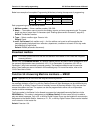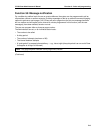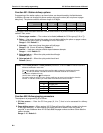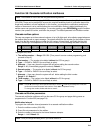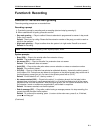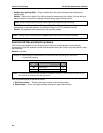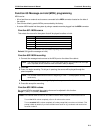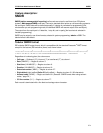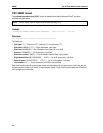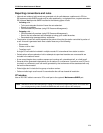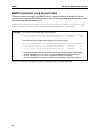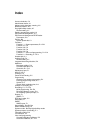
IVX S-Class Administrator’s Manual SMDR
F.1
Feature description:
SMDR
SMDR (station message detail reporting) call records are output in real time via an ESI phone
system’s Maintenance/SMDR serial port. Connect a standard serial printer or call accounting system to
the serial port. SMDR data will be stored temporarily if a laptop is connected for programming (five
minutes after you exit programming mode, the buffered SMDR will resume output to the serial port).
The output from the serial port is: 8 data bits, 1 stop bit, and no parity [the baud rate is selected in
Installer programming].
SMDR may be output in one of two formats, selected in system programming: tabular or CSV. The
tabular format is the default.
Tabular SMDR format
ESI’s tabular SMDR output format, which is compatible with the standard Panasonic
®
DBS
®
format
except for the last two (ESI-exclusive) items, is as shown below:
1 2 3 4 5 6 7 8
12345678901234567890123456789012345678901234567890123456789012345678901234567890
T MM/DD HH:MM:SS HH:MM:SS NNN XXXXXXXXXXXXXXXXXXXXXXXXXXX AAAAAAAAAA LL
Regardless of numbering plan, the columns are:
• Call type — Outbound (“O”), inbound (“I”) or transferred (“T”) at column 1.
• Date (“MM/DD”) — Begins at column 3.
• Start time (“HH:MM:SS”) — Begins at column 9.
• Duration (“HH:MM:SS”) — Begins at column 18.
• Extension number (“NNN”) — Begins at column 27.
• Digits dialed (right-justified)/Caller ID (left-justified) — Begins at column 31 (28 characters).
• Account code (“AAAA”) — Begins at column 60. (See also “SMDR format when using account
codes,” page F.4.)
• CO line number (“LL”) — Begins at column 77.
Each record is terminated with a line feed and carriage return character.



